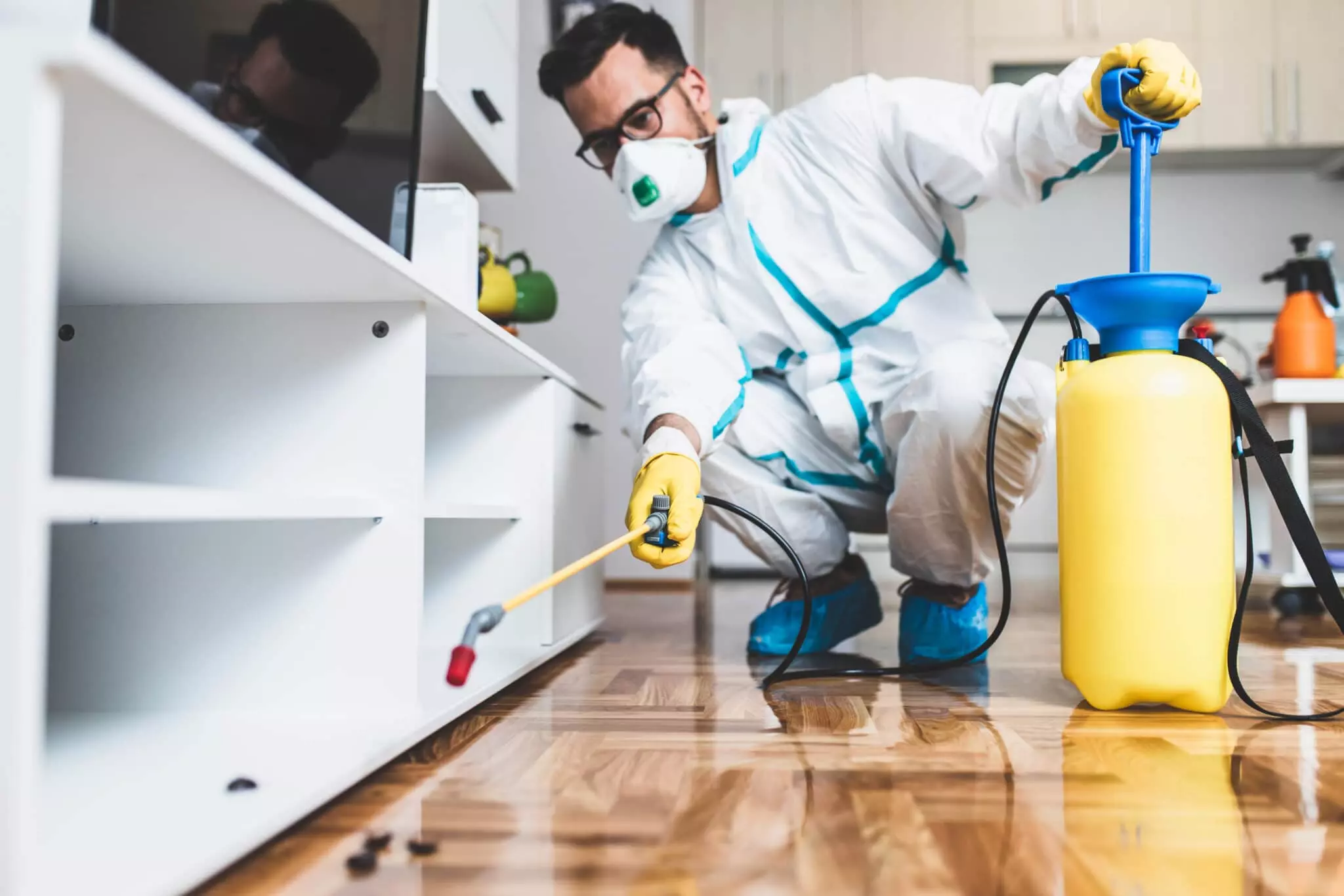Reliable A1 Bed Bug Exterminator Charlotte - Do Away With Bed Bugs Rapid
Reliable A1 Bed Bug Exterminator Charlotte - Do Away With Bed Bugs Rapid
Blog Article
Bed Pest Treatment Failure: Comparing Chemical Vs. Non-Chemical Solutions
In the world of bug control, particularly when managing the consistent concern of bed pests, the selection between chemical and non-chemical treatment services can be a critical one. Both methods provide distinct advantages and drawbacks, affecting elements such as effectiveness, security factors to consider, and general price. By checking out the nuanced details of each technique, a more clear understanding of which path to pursue in addressing a bed bug problem can be achieved.
Efficiency of Chemical Treatments
Chemical treatments for bed bug invasions have actually been widely acknowledged for their potent and quick efficiency in eliminating these insects. When thinking about the performance of chemical therapies, it is crucial to comprehend that they can supply a fast and thorough remedy to a bed pest problem. Specialist pest control operators typically count on insecticides to target bed bugs at different phases of their life process, consisting of fairies, adults, and eggs. These chemicals commonly function by disrupting the bed insects' anxious system, causing paralysis and ultimate death.
In addition, chemical therapies have the advantage of supplying recurring effects, implying that they can proceed to remove bed insects also after the initial application. This recurring activity is specifically beneficial in combating any potential re-infestations. Furthermore, the rapid action of chemical treatments can bring relief to people facing extreme bed bug invasions, enabling them to restore control of their home quickly.
Safety And Security Problems With Chemical Solutions
One important facet that calls for mindful consideration when making use of chemical solutions for bed bug treatment is guaranteeing the safety and security of owners and the environment. While chemical treatments can be reliable in getting rid of bed pests, they may posture risks otherwise handled correctly. One of the primary security worries with chemical options is the prospective damage they can create to human health and wellness. Exposure to specific chemicals made use of in bed pest therapies can bring about respiratory system concerns, skin inflammation, or various other adverse reactions, particularly in people with pre-existing problems or sensitivities. In addition, improper application or dosage of chemical pesticides can cause toxic residues remaining in the cured location, presenting long-term health and wellness risks to passengers.
Additionally, the ecological influence of chemical options is another significant factor to consider. Some chemicals used in bed pest therapies might be harmful to helpful pests, wild animals, and ecosystems if they seep right into the soil or water supply. It is vital to make use of chemical therapies judiciously, adhering to safety guidelines, and considering less hazardous choices to alleviate these threats and make certain the secure and reliable administration of bed insect infestations.
Benefits of Non-Chemical Techniques
Thinking about the potential safety and security issues and ecological influence related to chemical solutions for bed bug therapy, his explanation discovering non-chemical techniques offers a promising option with several distinct advantages. Non-chemical techniques supply a much safer option for households, especially those with children, family pets, or individuals delicate to rough chemicals. These methods get rid of the threats of direct exposure to poisonous compounds, lowering the capacity for negative health and wellness results. In addition, non-chemical treatments are eco-friendly, as they do not add to air or water pollution, making them a sustainable choice for bug control.
In addition, non-chemical remedies can be reliable in targeting bed insects, including hard-to-reach locations where chemical treatments might not pass through - A1 charlotte bed bug exterminator. Techniques such as heat treatment, vacuuming, heavy steam cleansing, and cushion coverings give detailed eradication without the use of unsafe chemicals.
Limitations of Non-Chemical Treatments

Additionally, non-chemical treatments frequently call for multiple applications to achieve successful obliteration. This can be lengthy and may not constantly assure complete removal of all bed insects and their eggs, especially in concealed or hard-to-reach places.
In addition, the success of non-chemical therapies greatly counts on proper execution and thoroughness, which can be testing for individuals without professional expertise. Poor application of non-chemical techniques might result in incomplete elimination, causing persistent invasions and the demand for additional therapies.
For that reason, while non-chemical treatments have their benefits, it is vital to acknowledge these restrictions and consider them when determining the most efficient approach for taking care of bed insect invasions.
Cost Comparison: Chemical Vs. Non-Chemical Options
Offered the limitations associated with non-chemical treatments, a vital facet to assess in the context of bed insect monitoring is the price comparison between chemical and non-chemical options. Chemical therapies typically include the application of insecticides by specialists, which can range from $250 to $900 per room, imp source relying on the severity of the invasion and the size of the location to be dealt with. In comparison, non-chemical therapies like heat therapy or heavy steam can be extra costly, with prices varying from $1,000 to $6,000 for a whole home. While the initial price of chemical treatments may seem reduced, multiple therapies may be required to fully remove the invasion, potentially boosting the total expense. On the various other hand, non-chemical options may offer an extra environment-friendly and lasting solution, although they can be cost-prohibitive for some people. Inevitably, when thinking about the cost navigate to this site of bed pest therapy alternatives, it is essential to weigh the in advance expenses against the efficiency and lasting sustainability of the picked method.
Verdict

Thinking about the potential safety worries and environmental effect connected with chemical solutions for bed pest therapy, discovering non-chemical approaches offers an encouraging option with several unique benefits.Given the restrictions linked with non-chemical treatments, a vital element to assess in the context of bed bug administration is the cost comparison between chemical and non-chemical options. In contrast, non-chemical treatments like warmth treatment or vapor can be a lot more costly, with prices varying from $1,000 to $6,000 for a whole home. While the first price of chemical therapies may appear reduced, several treatments may be needed to completely remove the invasion, possibly raising the total expense.In verdict, when comparing chemical and non-chemical bed bug therapy choices, it is important to consider efficiency, safety and security, advantages, constraints, and cost.
Report this page